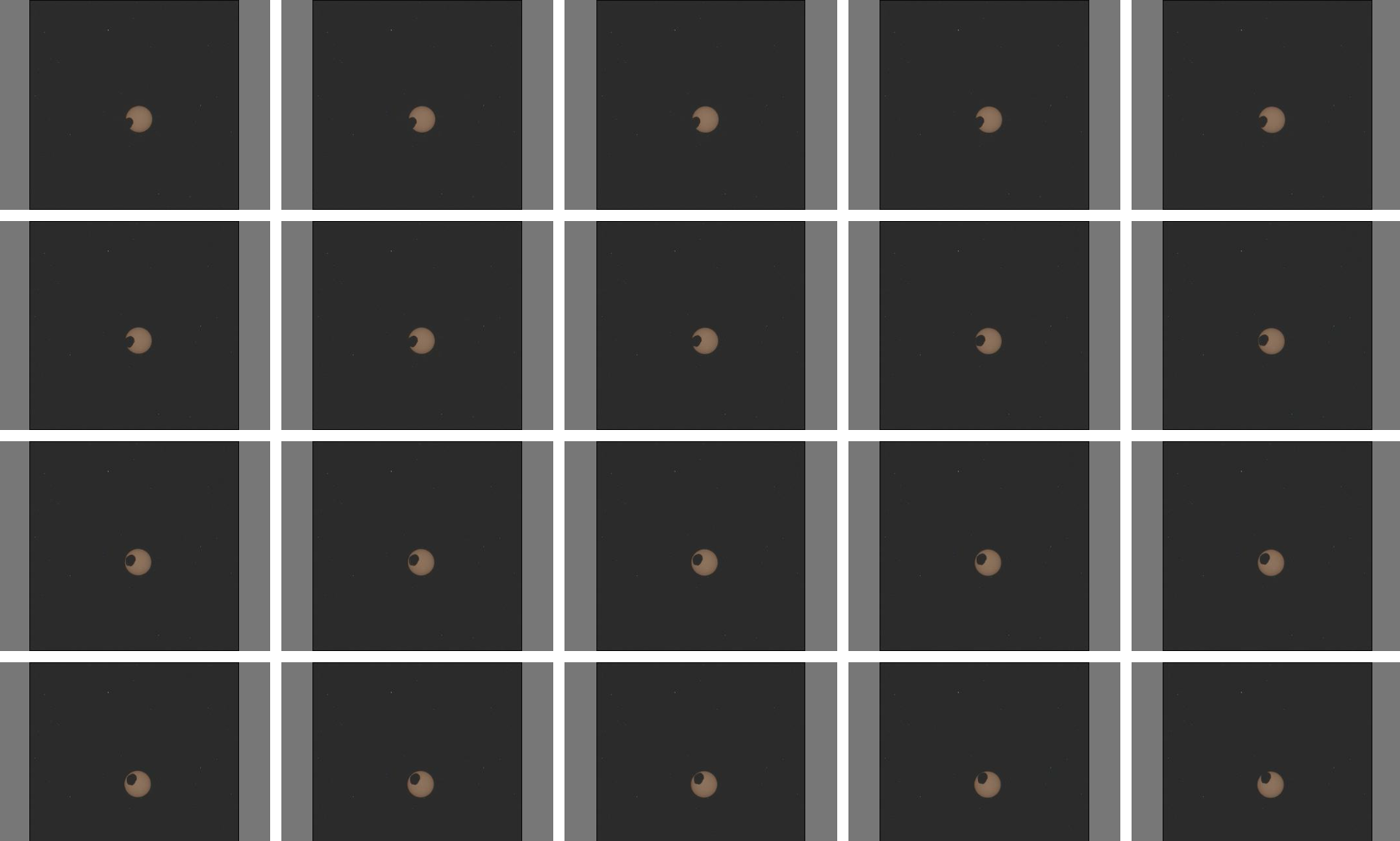The next solar eclipse to cross North America is fast approaching, but over on Mars, the Red Planet already experienced one of its own celestial shadow events this year.
On February 8, the asteroid-sized Martian moon Phobos crossed in front of the sun above Jezero Crater—the area just so happening to host NASA’s Perseverance rover. As Phobos continued across the sky, Percy’s left Mastcam-Z camera angled away from its usual landscape vista subject matter towards the satellite, snapping a few dozen photos for project coordinators back at NASA’s Jet Propulsion Laboratory (JPL).

The images showcase a markedly different full lunar eclipse than the ones Earth receives every 2.5 or so years. Given both Phobos’ size and shape, the moon doesn’t fully cover the sun—instead, the 17x14x11 mile misshapen hunk of rock blocks only a small portion of the star as it continues along its path. The result arguably resembles more googly eye than awe-inspiring cosmic calendar occurrence, but it’s still a pretty impressive vantage point.
Phobos and its smaller sibling moon Deimos were discovered in 1877 by US astronomer Asaph Hall, and are respectively named after the Greek words for “Fear” and “Dread.” The origins of both satellites aren’t wholly understood, although astronomers theorize them to be either asteroids or debris leftover from the solar system’s formation that occurred around 4.5 billion years ago.
[Related: The Mars Express just got up close and personal with Phobos.]
While the Earth’s moon continues to inch away from its planetary pull at a rate of roughly 1.5 inches per year, Phobos is actually being drawn towards Mars—about six feet closer every century. While that makes for a comparatively slow descent, it does still mean the moon will eventually either crash into Mars, or break it up into thousands of fragments to form a planetary ring like Saturn’s. No need to worry, though, since that grand finale isn’t expected for another 50 million years. In the meantime, Phobos will continue orbiting Mars at a rate of three times per day, while the slower Deimos completes its journey every 30 hours.
Perseverance’s lunar eclipse capture, while incredible on its own, naturally fails to capture much detail of the moon’s pockmarked surface. Luckily, the European Space Agency’s Mars Express caught a closer look back in 2022, when the satellite came within just 52 miles of the moon to snap its own photos.





